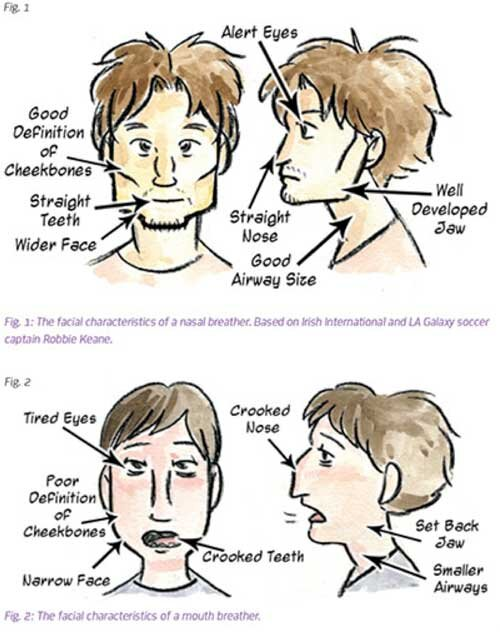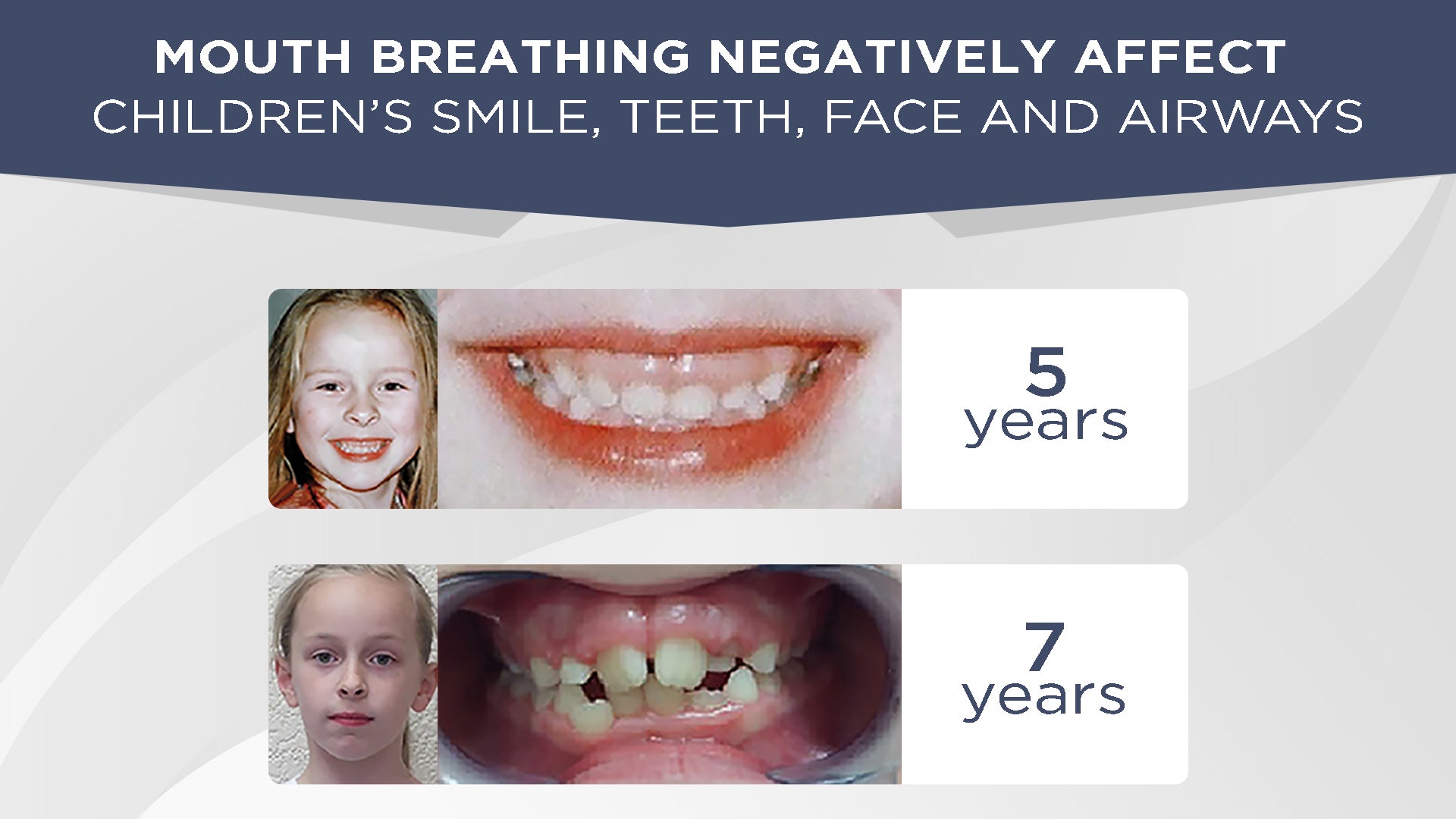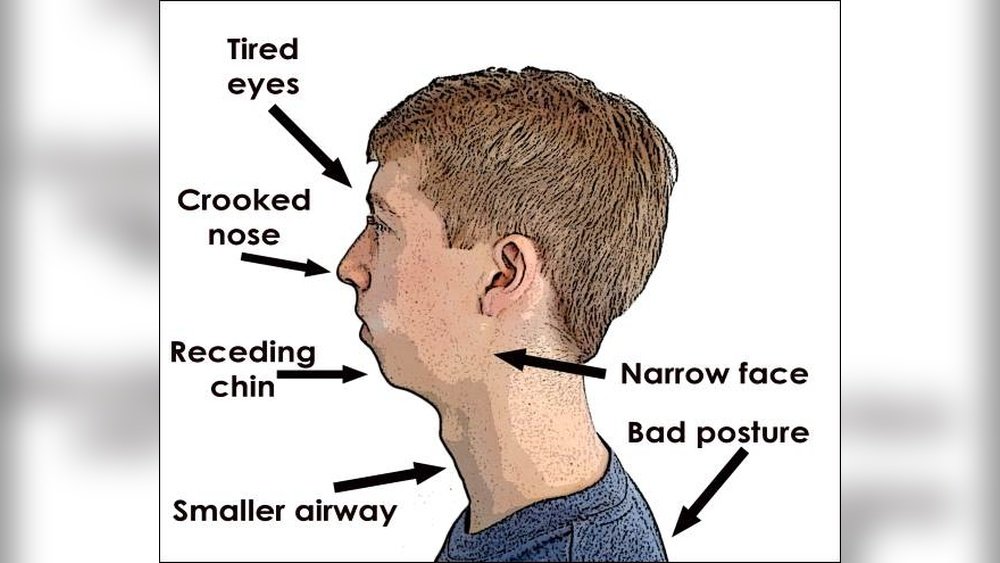Have you ever thought about how the simple way you breathe could be shaping your face? It turns out, your breathing habits—whether through your nose or mouth—play a surprising role in how your facial features develop and change over time.
If you’re someone who breathes mostly through your mouth, you might notice subtle differences like a recessed chin, narrow face, or even a gummy smile. But why does this happen, and can changing the way you breathe actually improve your appearance?
Keep reading to discover how your breathing habits affect your face shape and what you can do to support a healthier, more balanced look.

Credit: www.orofacial-myology.com
Mouth Breathing And Facial Changes
Mouth breathing can cause noticeable changes in facial structure over time. This habit affects how the muscles and bones develop, especially during childhood. Breathing through the mouth instead of the nose can create a distinct facial appearance. These changes may impact self-confidence and oral health. Understanding how mouth breathing alters the face helps in recognizing its effects early.
Characteristics Of Mouth-breathing Face
A mouth-breathing face often shows a narrow, elongated shape. The lips tend to stay apart, causing dryness and irritation. Cheeks may appear sunken or less full than usual. The nose looks flatter or less defined because nasal breathing is reduced. A gummy smile is common, where the upper gums are more visible. These traits develop gradually and become more obvious with time.
Effects On Jaw And Chin Shape
Mouth breathing affects the jaw by causing it to grow smaller or recessed. The lower jaw may appear weak or less defined. The chin can look pushed back or underdeveloped. Muscle tone around the jaw and neck decreases, reducing facial firmness. This lack of support changes the natural contour and can make the face appear longer. These changes may also lead to dental misalignment and bite problems.
Nasal Breathing And Facial Development
Nasal breathing plays a crucial role in shaping the face during growth. It supports the natural development of facial bones and muscles. Breathing through the nose encourages proper jaw alignment and balanced facial structure.
On the other hand, mouth breathing can disrupt these patterns. It may cause changes in the face shape and lead to health issues. Understanding nasal breathing helps in promoting healthy facial development.
Normal Facial Growth Patterns
Normal facial growth depends on many factors, including breathing habits. Nasal breathing promotes a wide palate and strong jaw muscles. This leads to a balanced and symmetrical face shape.
Proper nasal airflow helps the bones grow in the right direction. It supports a well-defined chin and high cheekbones. These features are signs of healthy facial development.
Benefits Of Nose Breathing
Nose breathing filters and humidifies the air, protecting the lungs. It also stimulates nitric oxide production, which improves oxygen delivery in the body. This supports overall health and energy.
Facially, nose breathing encourages proper tongue posture. The tongue rests on the roof of the mouth, guiding the upper jaw’s growth. This prevents narrow jaws and crowded teeth.
Consistent nasal breathing reduces the risk of developing a long, narrow face. It helps maintain a strong jawline and prevents a recessed chin. These benefits contribute to a healthier and more attractive face shape.
Facial Aging Linked To Breathing Habits
Breathing habits have a surprising effect on how the face ages. The way air moves through the nose or mouth shapes facial muscles and skin over time. Poor breathing patterns can speed up visible signs of aging and change face structure. Understanding these effects helps maintain a youthful appearance naturally.
Impact On Skin Elasticity
Breathing deeply through the nose improves oxygen flow to the skin. Better oxygen keeps skin cells healthy and elastic. Mouth breathing reduces moisture around lips and cheeks, causing dryness and early wrinkles. Poor oxygen supply weakens collagen, the protein that keeps skin firm. Over time, this leads to sagging and fine lines.
Muscle Tone And Jawline Definition
Proper nasal breathing engages facial muscles correctly, supporting jawline shape. Mouth breathing relaxes lower face muscles, weakening jaw and cheek tone. This causes a receded chin and less defined jawline. Muscle weakness also creates a longer, narrower face appearance. Strong muscle tone helps maintain sharp, youthful facial contours.
Credit: www.mouthshield.com
Breathing Habits And Facial Symmetry
Breathing habits play a surprising role in shaping your face. The way you breathe affects how your facial muscles and bones develop over time. Good breathing supports balanced growth, while poor habits can cause asymmetry and irregularities. Understanding this link can help improve both appearance and health.
Breathing through the nose encourages proper jaw alignment and muscle tone. Mouth breathing tends to relax the lower face, which may lead to uneven features. This imbalance can become more noticeable with age, affecting your natural symmetry.
Dental Crowding And Bite Issues
Chronic mouth breathing often narrows the dental arches. This narrowing creates less space for teeth, causing crowding. Crowded teeth shift out of place, leading to bite problems called malocclusion.
An uneven bite affects how the jaw closes and moves. It places stress on some muscles more than others, contributing to facial asymmetry. The jaw may appear misaligned or shifted to one side.
Effects On Facial Balance
Balanced breathing supports even muscle strength on both sides of the face. Mouth breathing weakens muscles around the mouth and chin. This can cause the lower face to look longer or asymmetrical.
Over time, poor breathing habits may change the shape of the nose, cheeks, and jawline. The face might look narrow, recessed, or uneven. These changes affect your natural facial harmony and overall appearance.
Correcting Breathing-related Changes
Correcting changes caused by breathing habits can improve facial structure and overall health. Breathing through the mouth often alters jaw alignment and muscle tone. These changes affect the face shape and symmetry.
Early correction helps guide proper facial growth. It also reduces the risk of dental problems and poor posture. Treatments focus on restoring natural breathing patterns and supporting healthy facial development.
Orthodontic Interventions
Orthodontic treatments can realign teeth and jaws affected by mouth breathing. Braces and expanders widen narrow arches caused by improper breathing.
These devices improve bite function and facial balance. Correcting dental crowding reduces stress on the jaw muscles. This supports a more natural face shape over time.
Orthodontists may also suggest retainers or appliances to encourage nasal breathing. Early intervention in children yields the best results. Adults can benefit, but treatment may take longer.
Improving Breathing Patterns
Changing breathing habits helps restore normal face growth. Breathing through the nose supports proper muscle use around the mouth and jaw.
Simple exercises train the tongue to rest on the roof of the mouth. This encourages nasal breathing and strengthens facial muscles.
Addressing nasal blockages or allergies can ease breathing difficulties. Using nasal strips or consulting with a specialist may help.
Consistent practice of correct breathing improves oxygen intake and facial tone. It also reduces dryness and tension in the lips and chin.

Credit: www.consciousbreathing.com
Frequently Asked Questions
Does The Way You Breathe Affect Your Face Shape?
Breathing through the mouth can alter face shape, causing a narrow, receded chin and flat nose. Nose breathing supports normal facial development.
Will My Face Look Better If I Stop Mouth Breathing?
Stopping mouth breathing can improve facial muscle tone, reduce dryness, and support normal facial growth and symmetry.
Can Mouth Breathing Cause Facial Asymmetry?
Chronic mouth breathing can cause facial asymmetry by altering jaw growth, dental alignment, and muscle tone over time.
How Much Does Mouth Breathing Affect The Jawline?
Mouth breathing often causes a recessed chin, narrow jaw, and weak muscle tone. It reduces jawline definition and alters facial structure. Chronic mouth breathing can lead to a small, V-shaped lower jaw and affect overall facial growth negatively.
How Does Mouth Breathing Affect Face Shape?
Mouth breathing can cause a narrow face, receded chin, flat nose, and gummy smile over time.
Can Nose Breathing Improve Facial Development?
Nose breathing supports normal facial growth and helps maintain balanced, healthy facial features.
Conclusion
Breathing habits play a key role in shaping your face over time. Mouth breathing can lead to a narrow face, receded chin, and other changes. Nose breathing supports natural facial growth and better health. Small changes in how you breathe may improve your appearance and comfort.
Pay attention to your breathing for a healthier face shape. Simple habits can make a real difference in the long run.
 Skip to content
Skip to content 